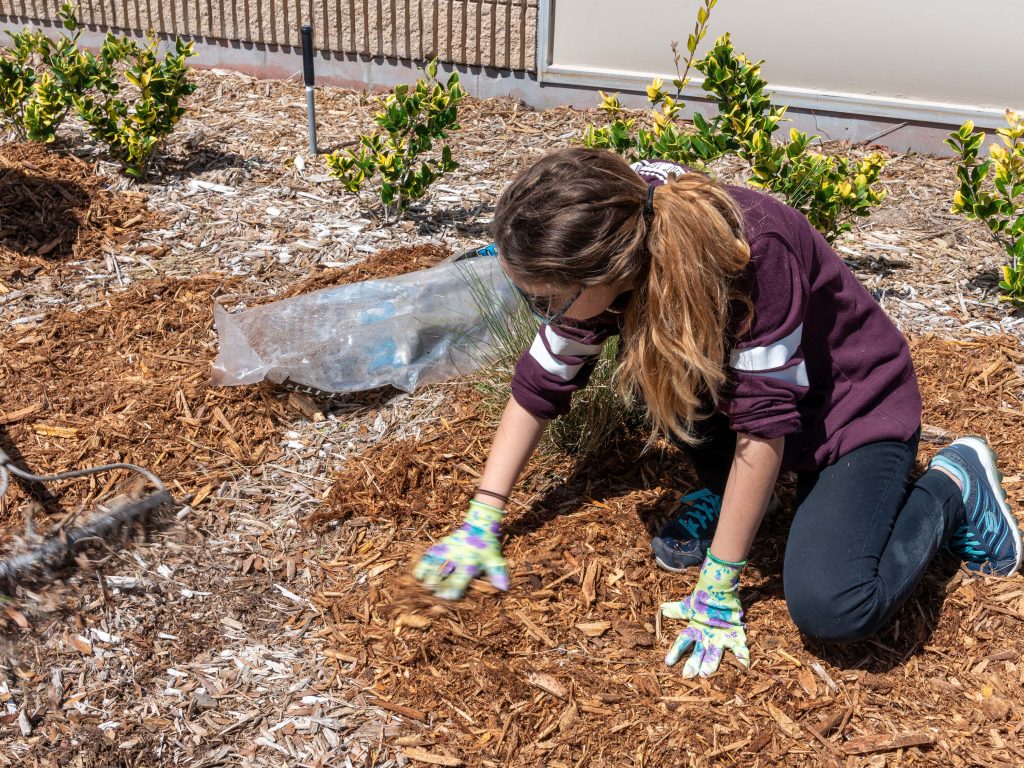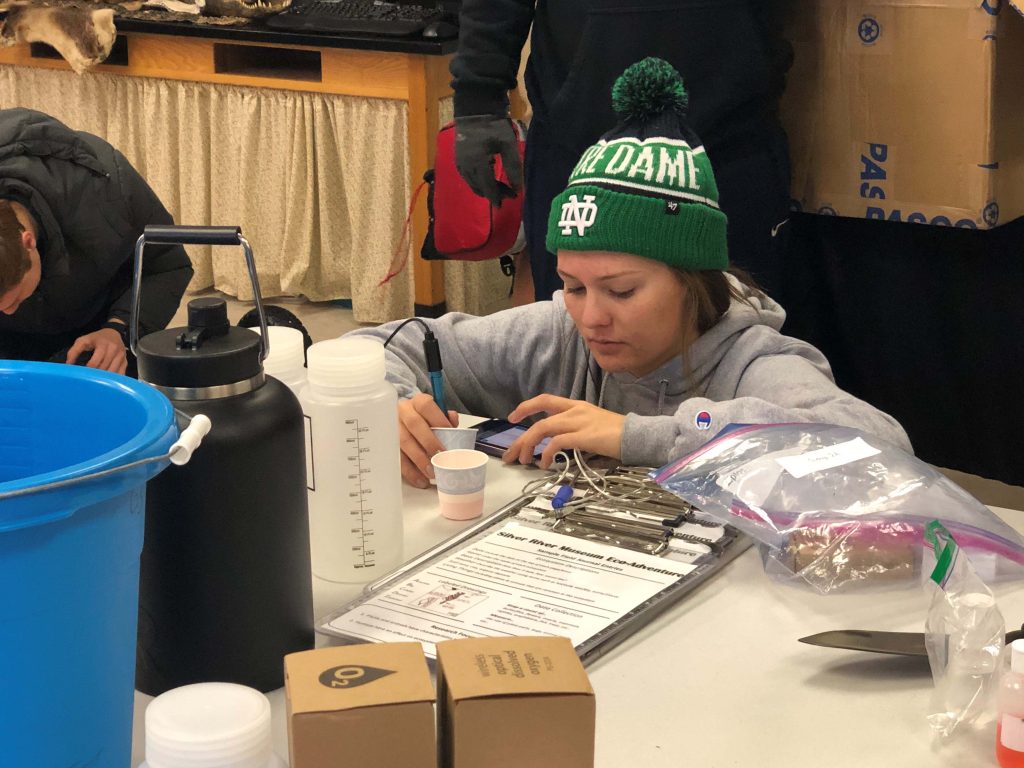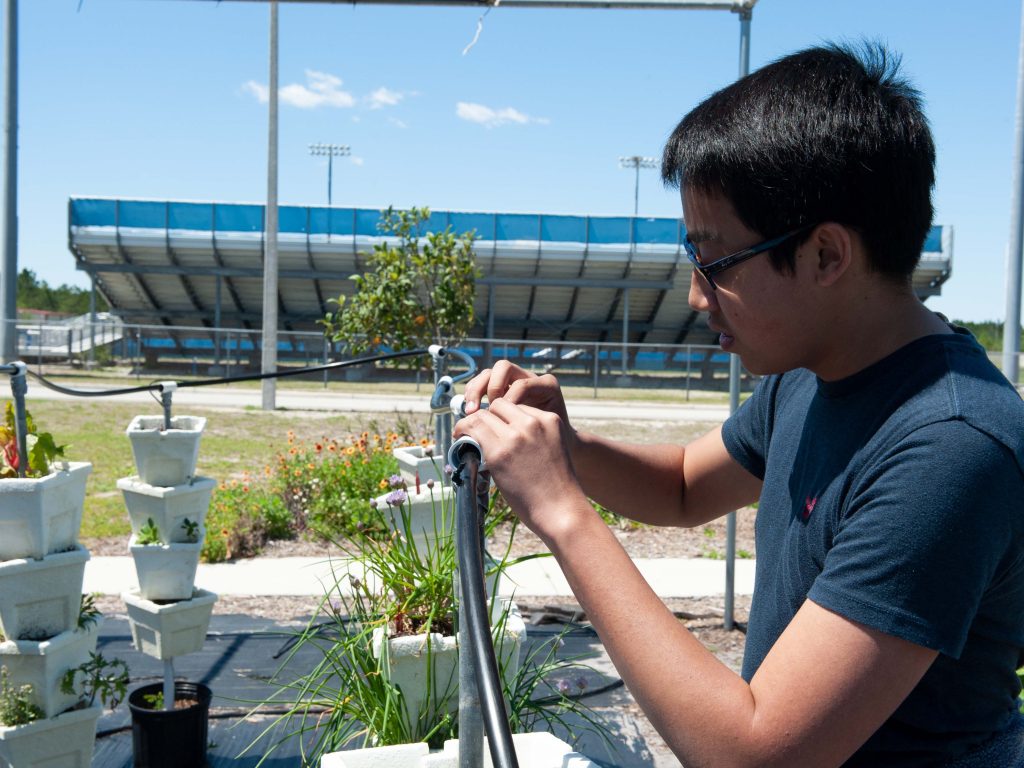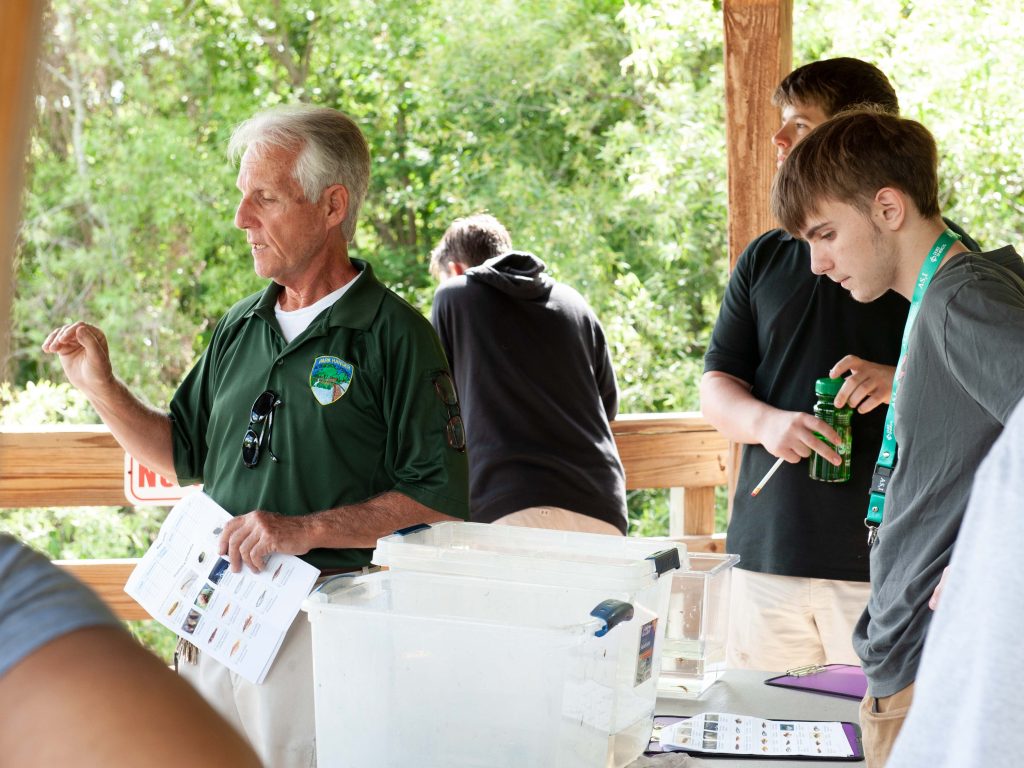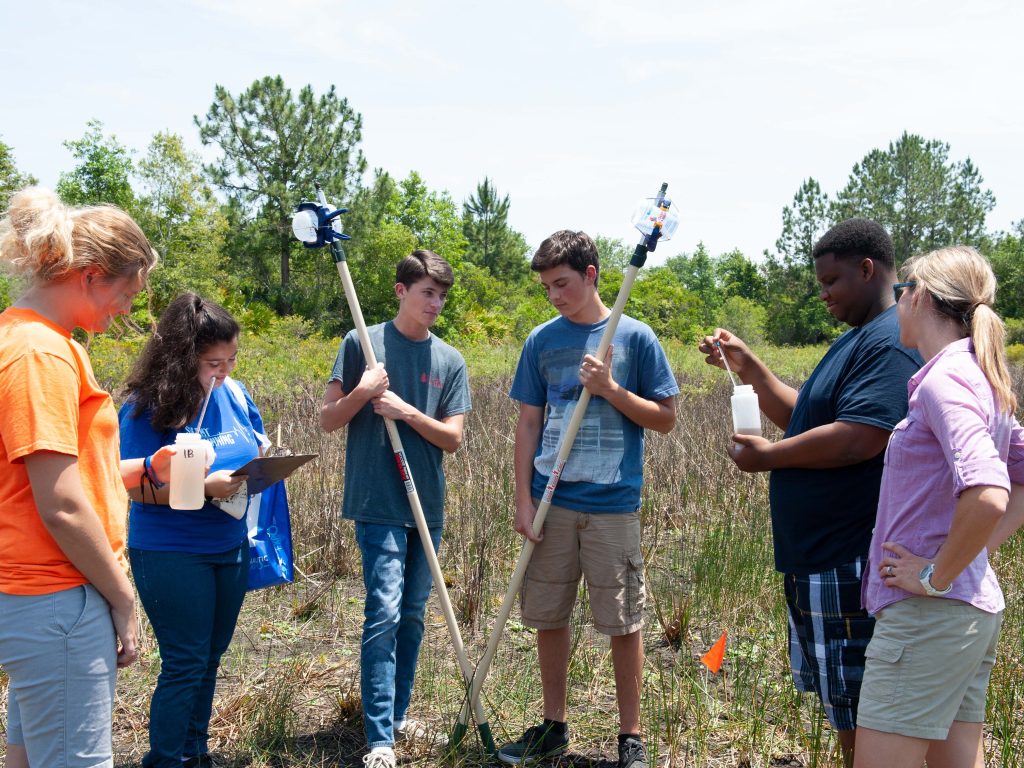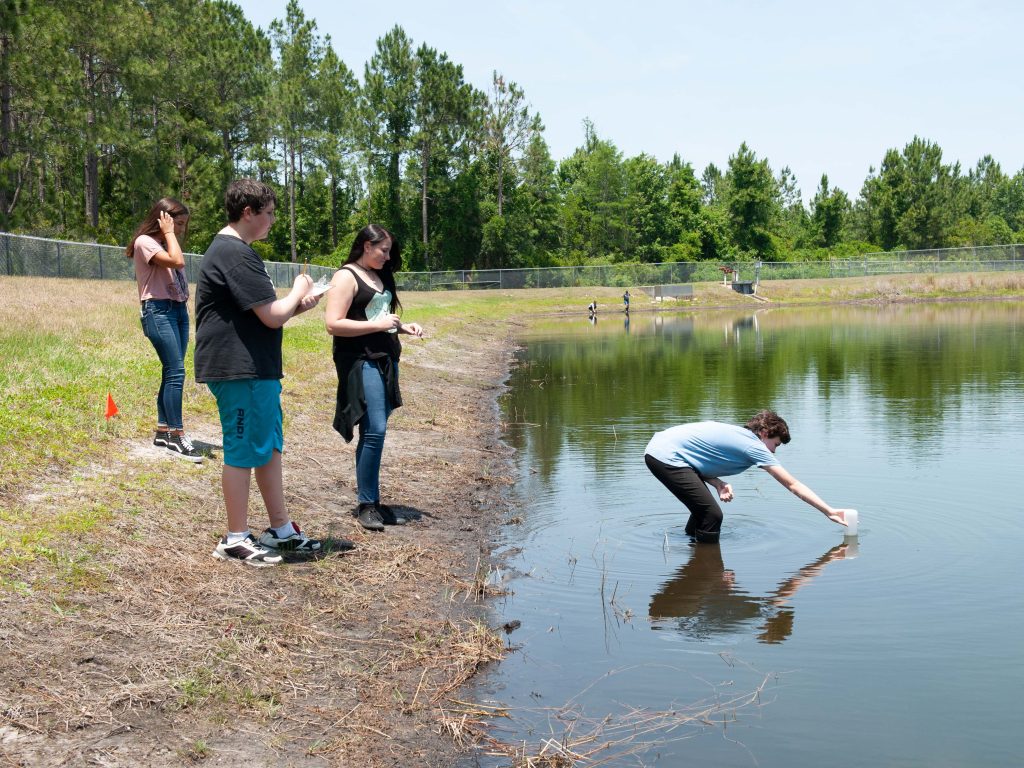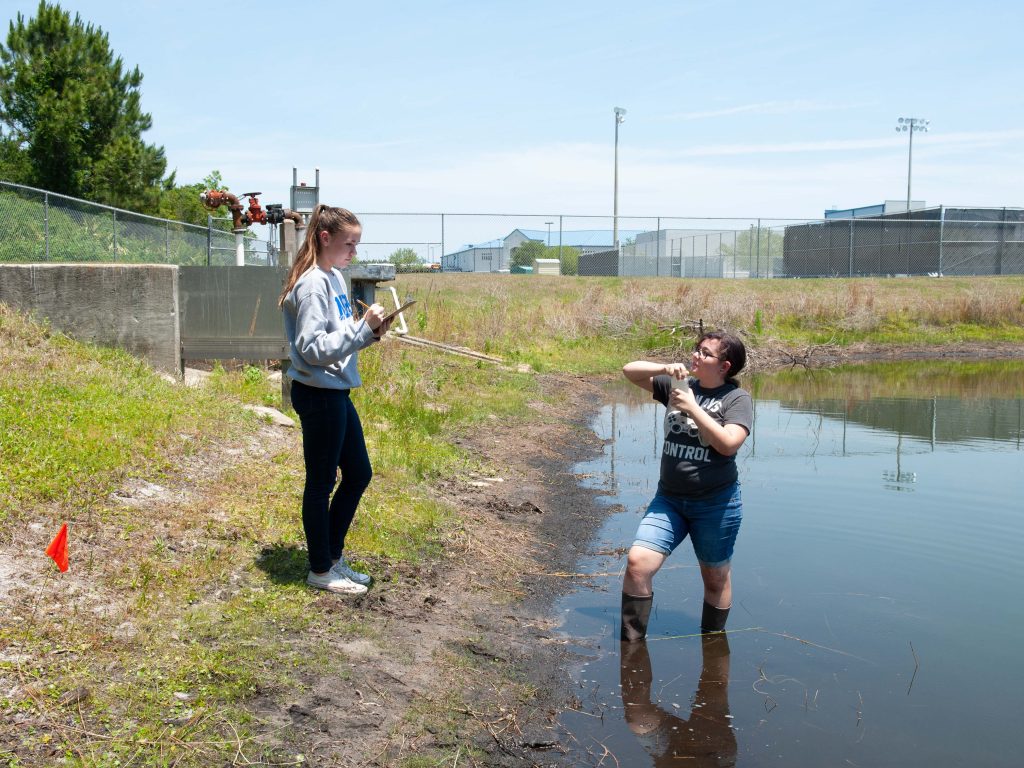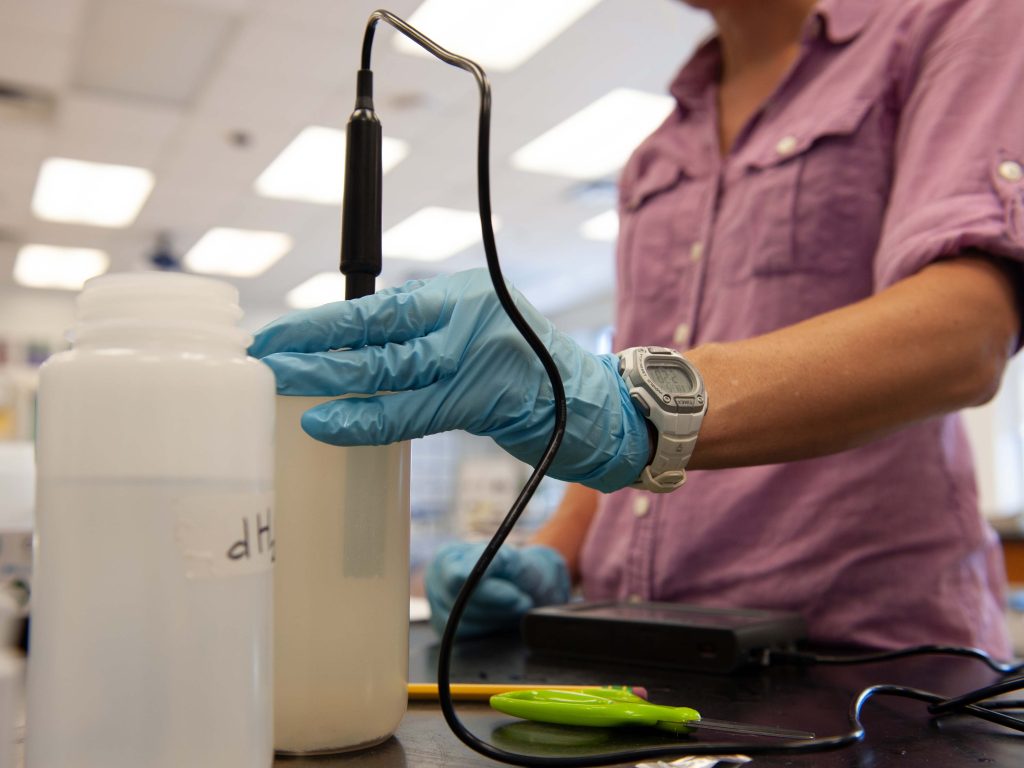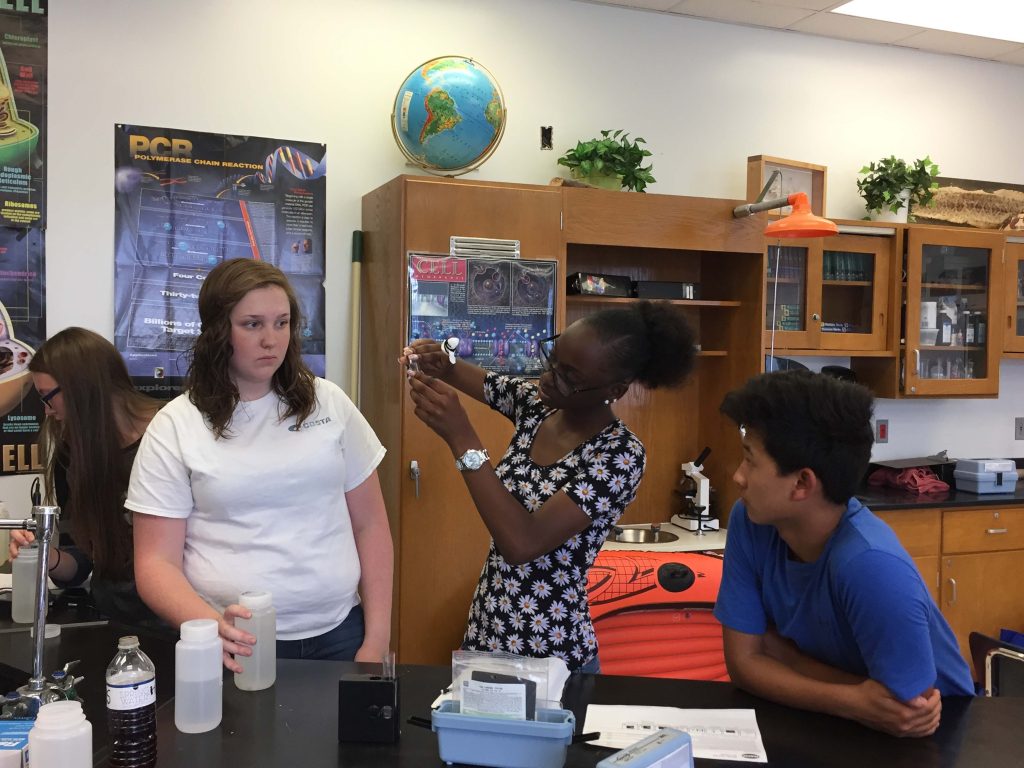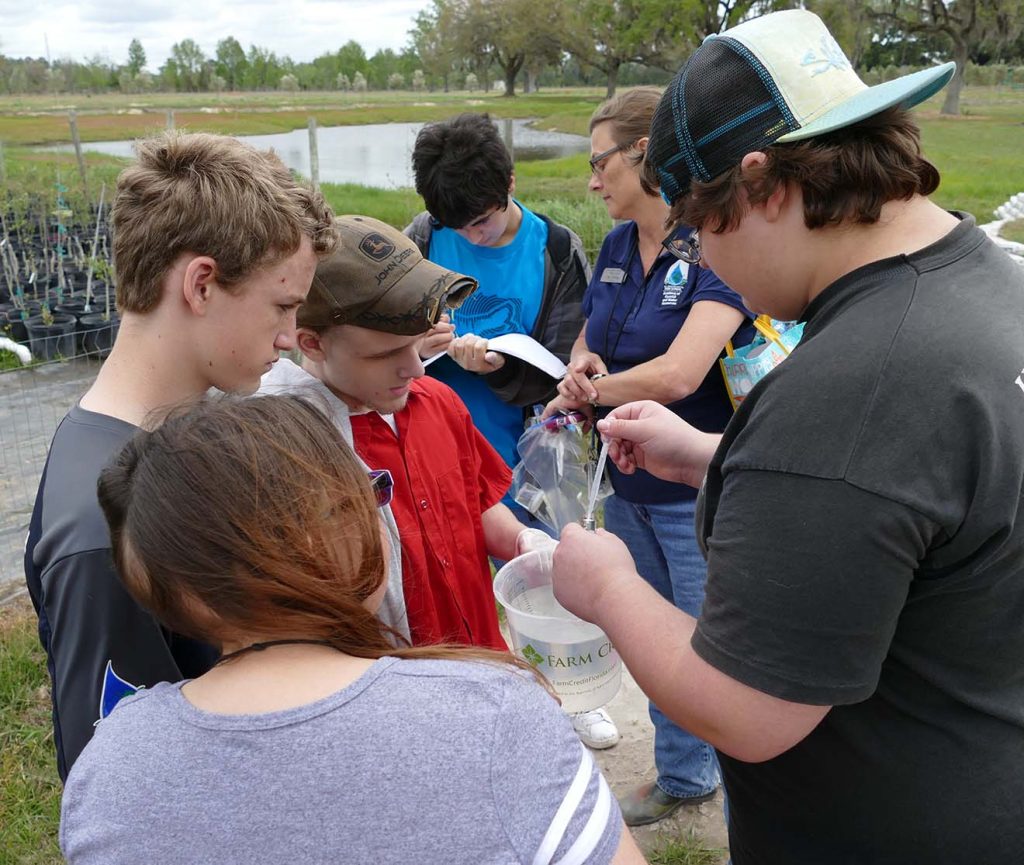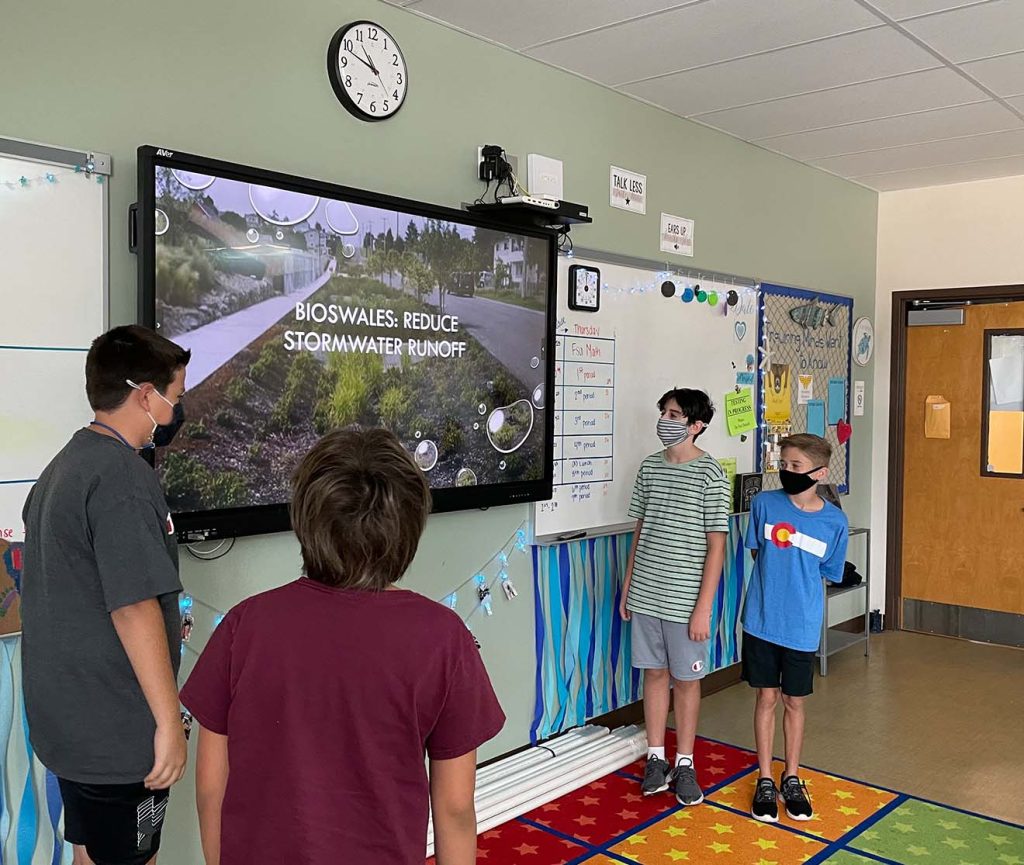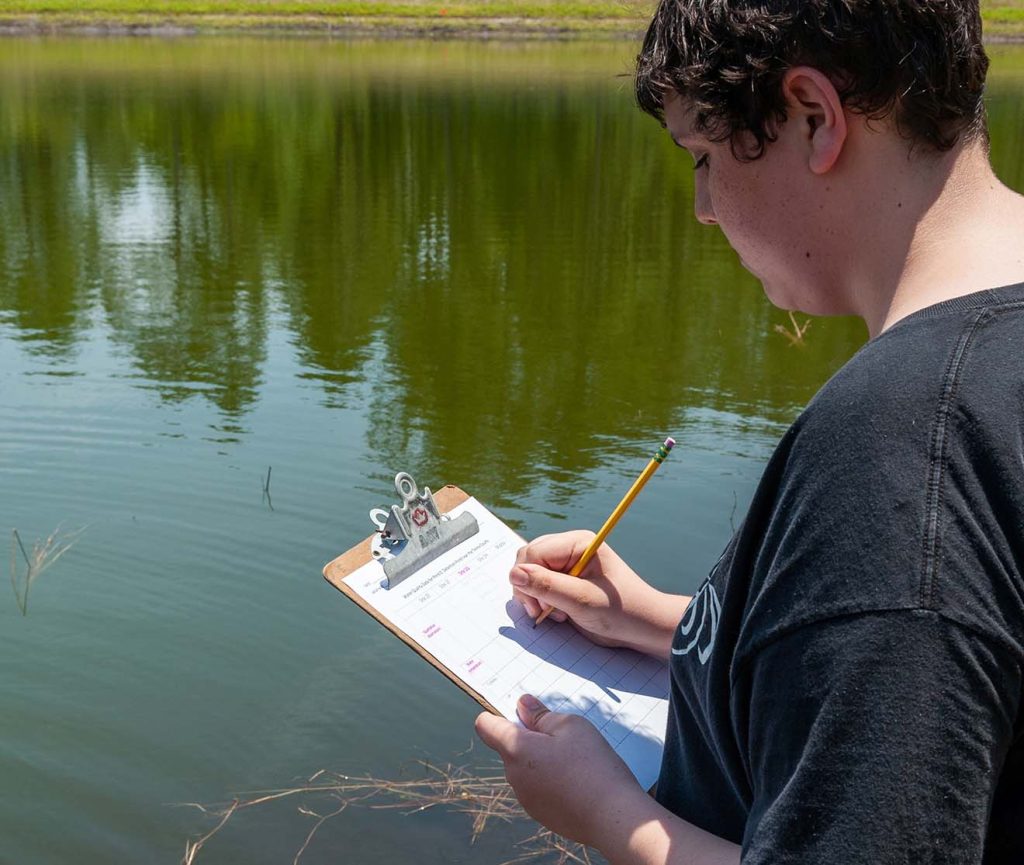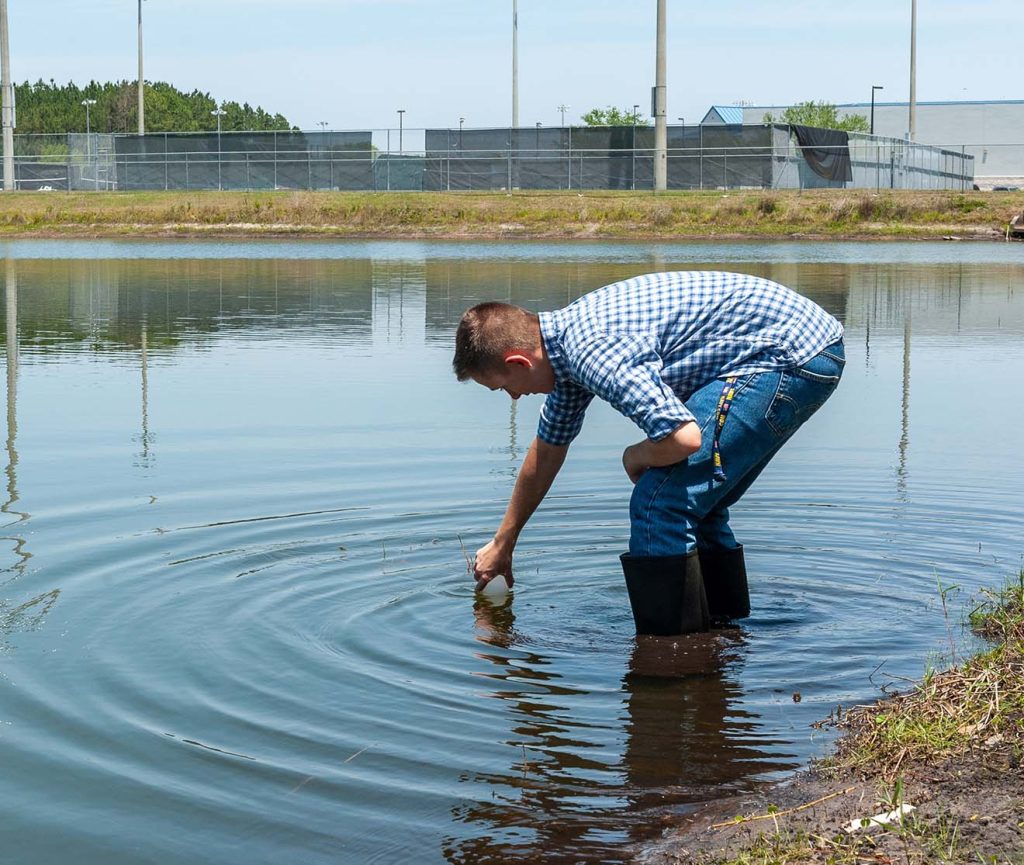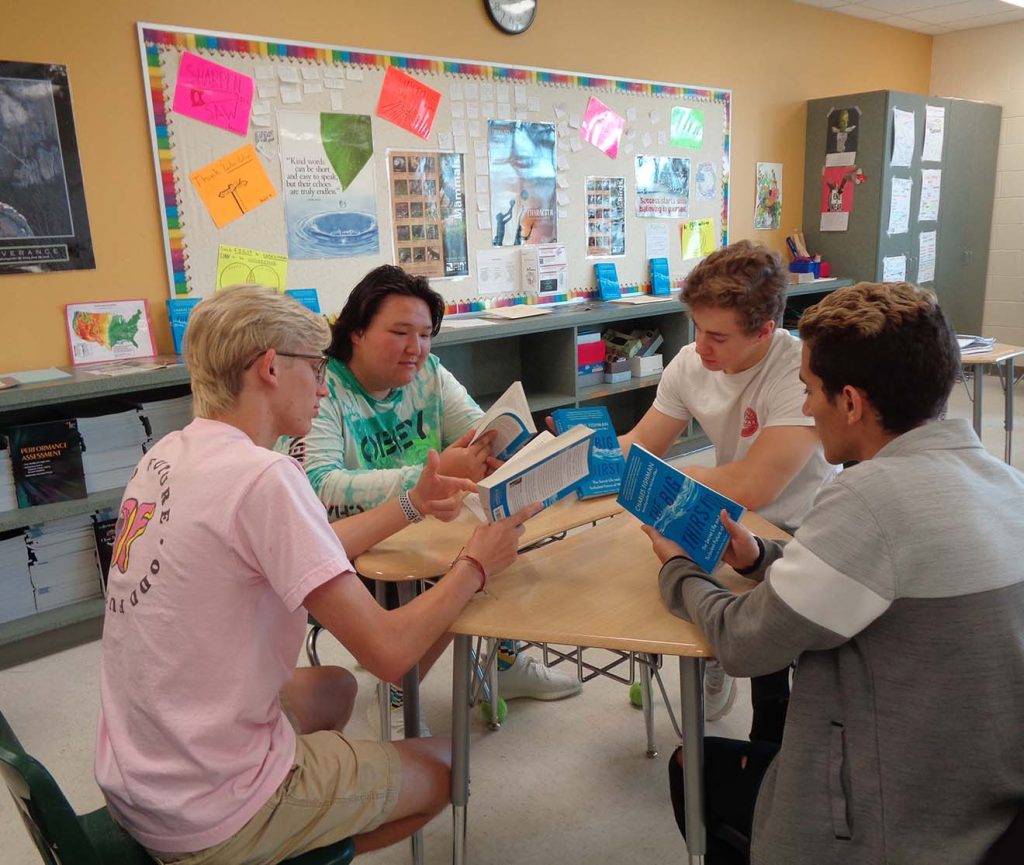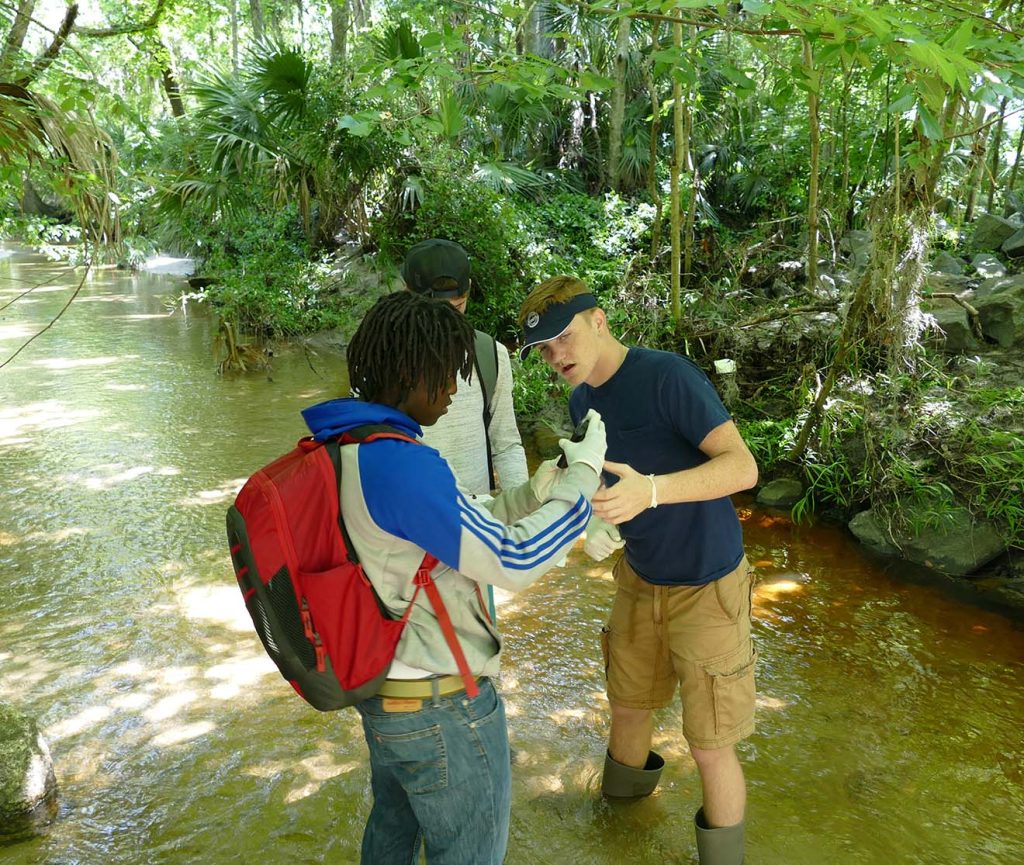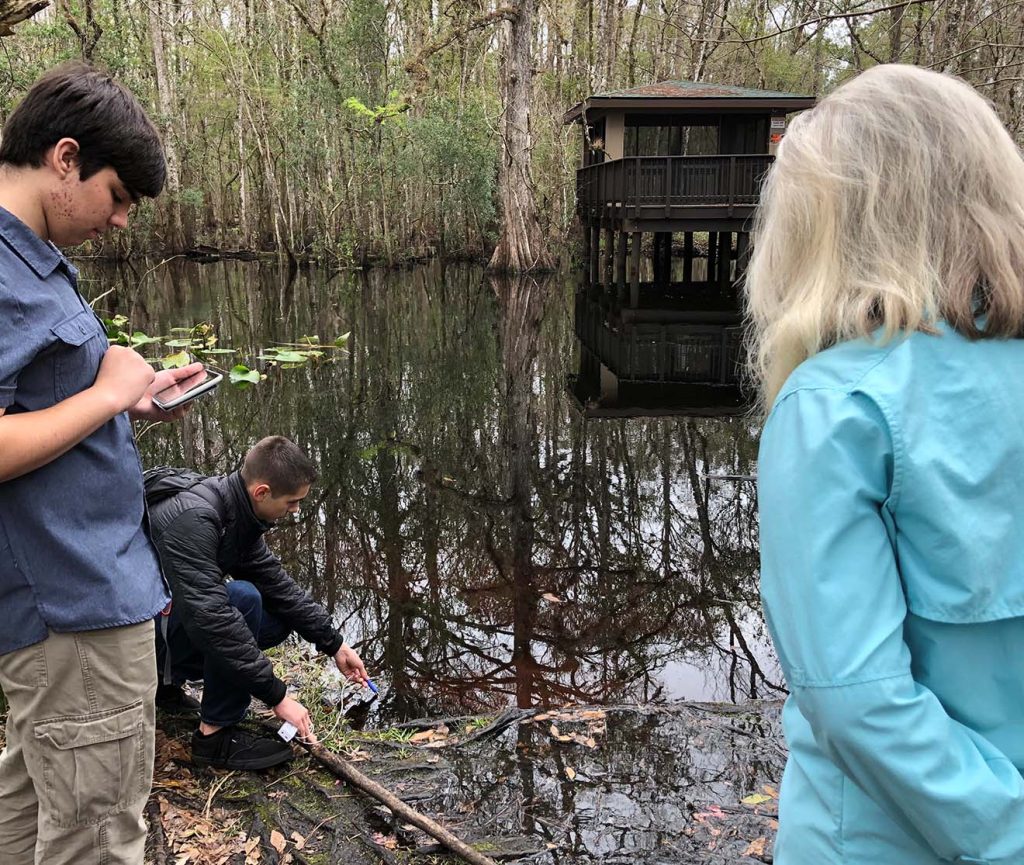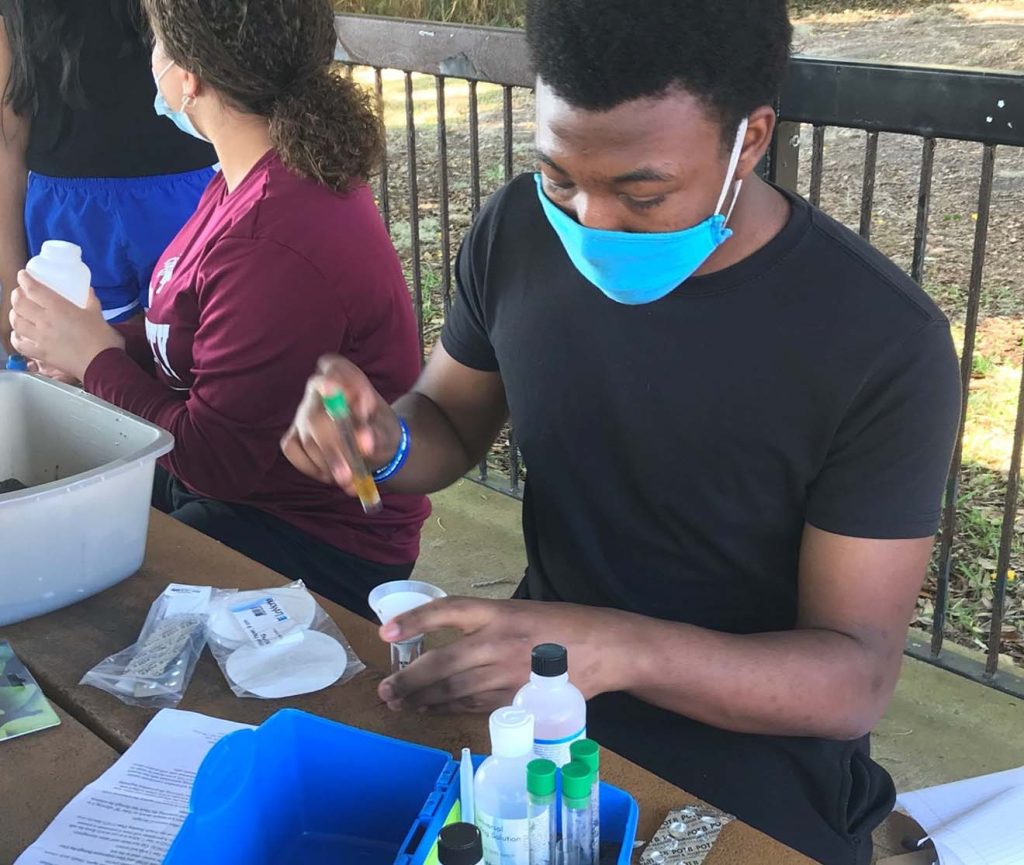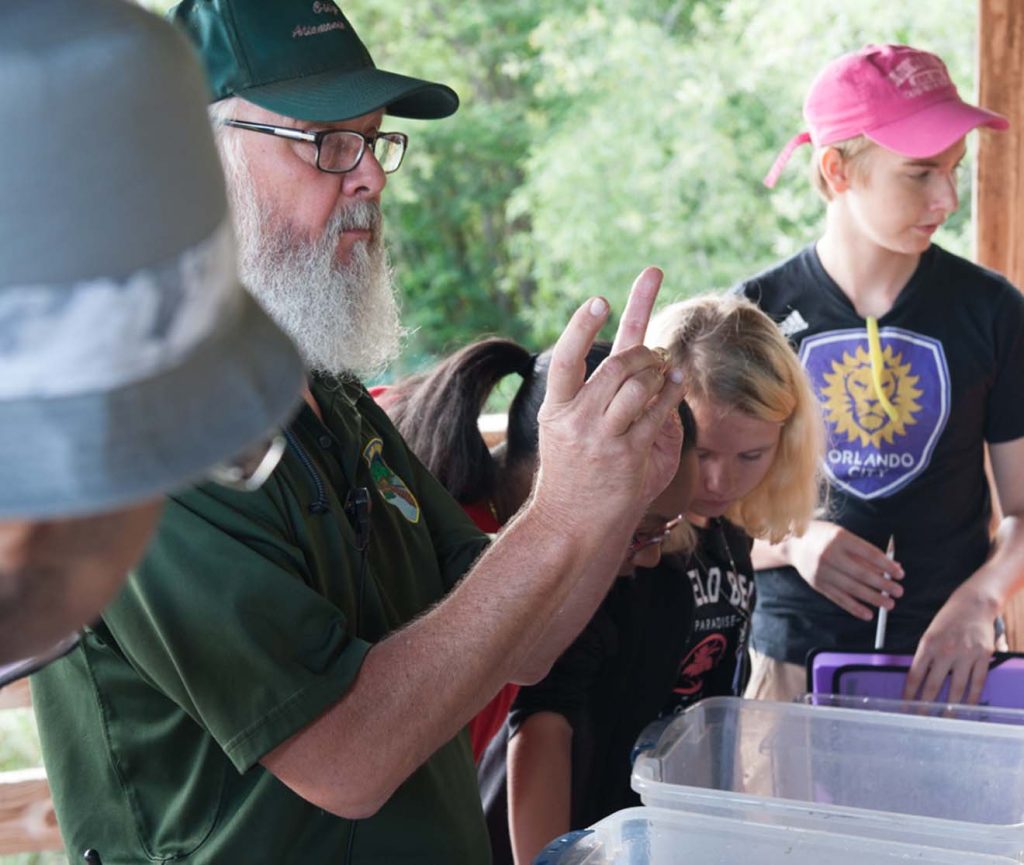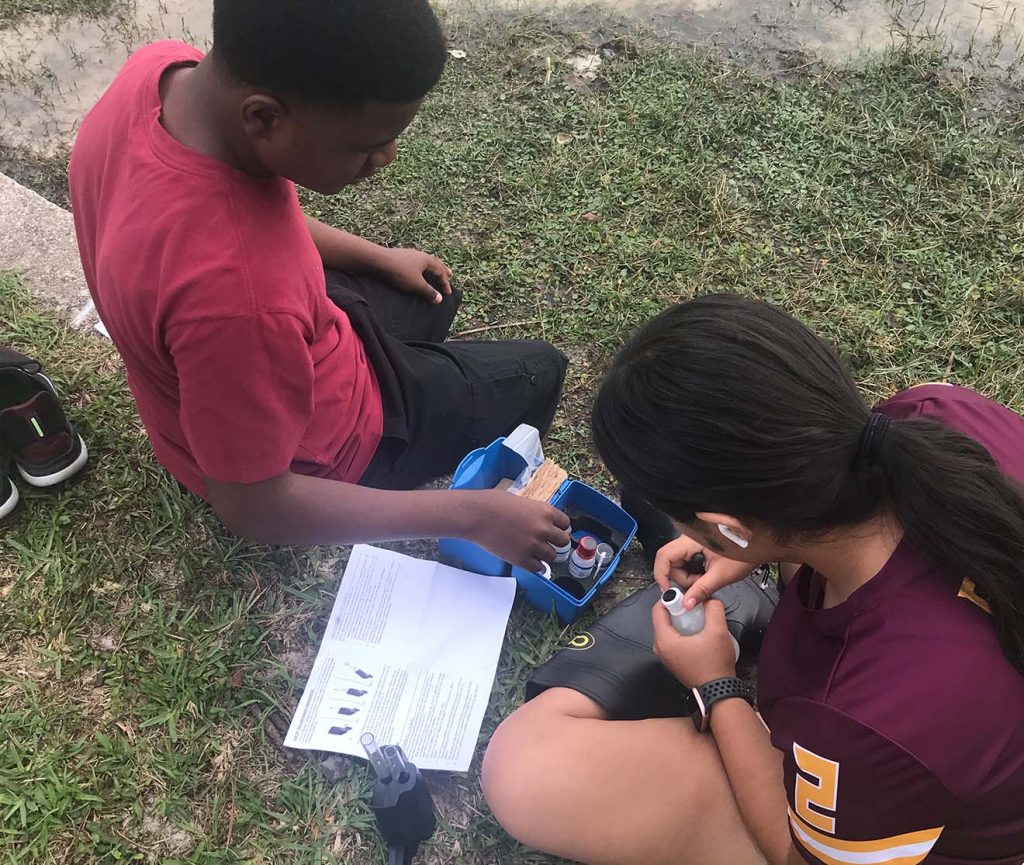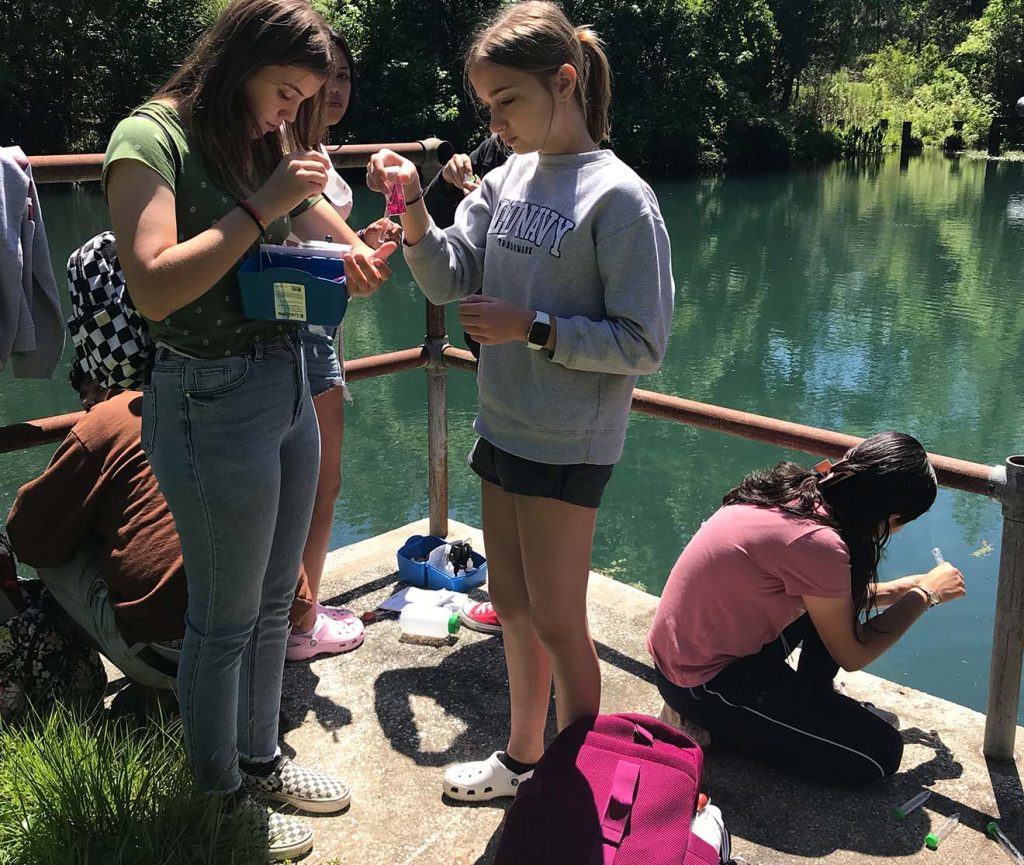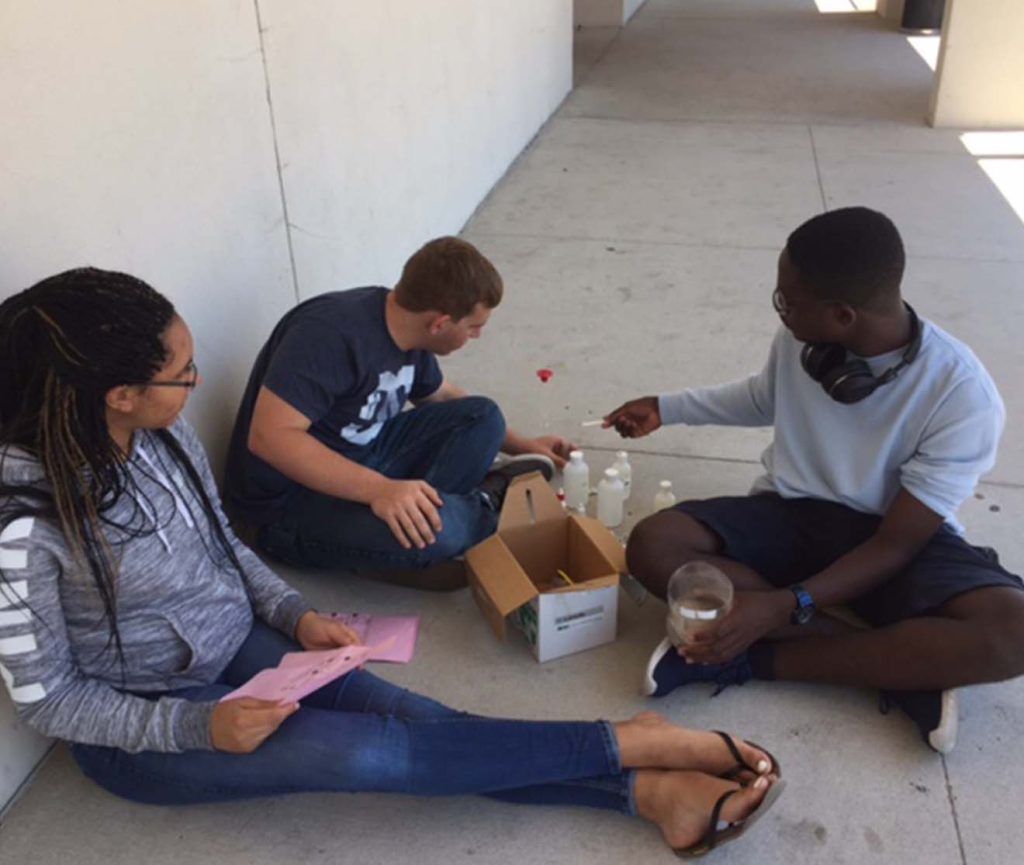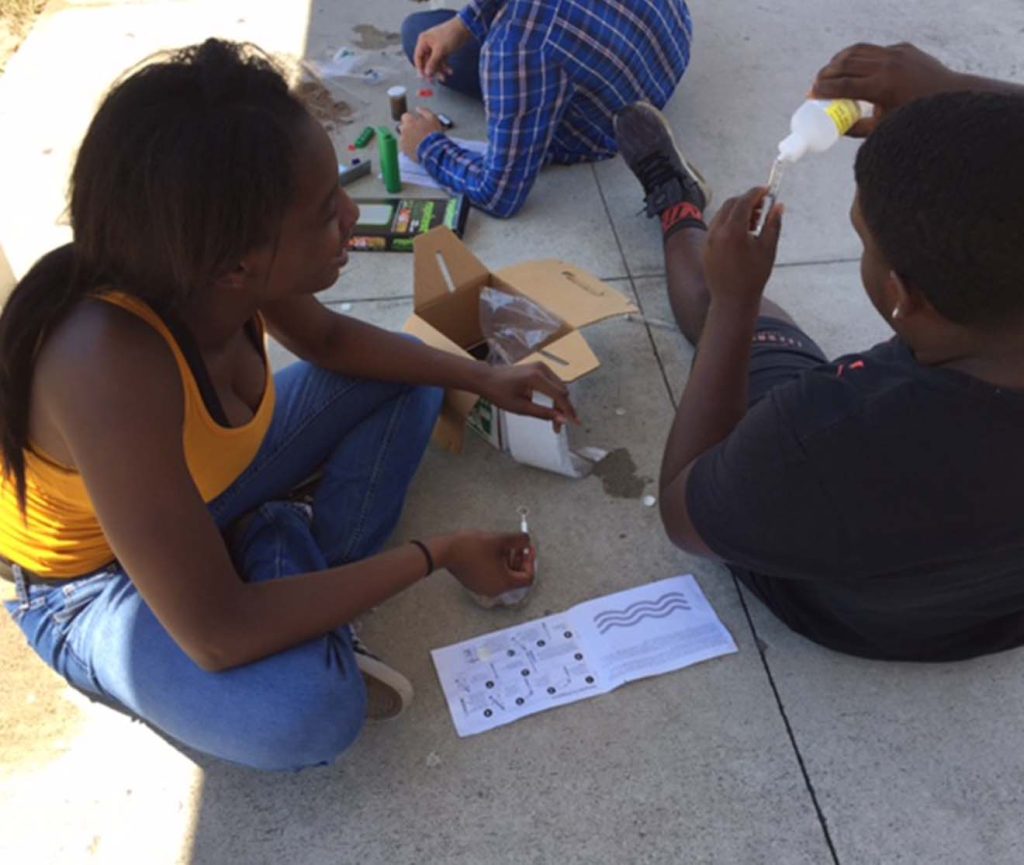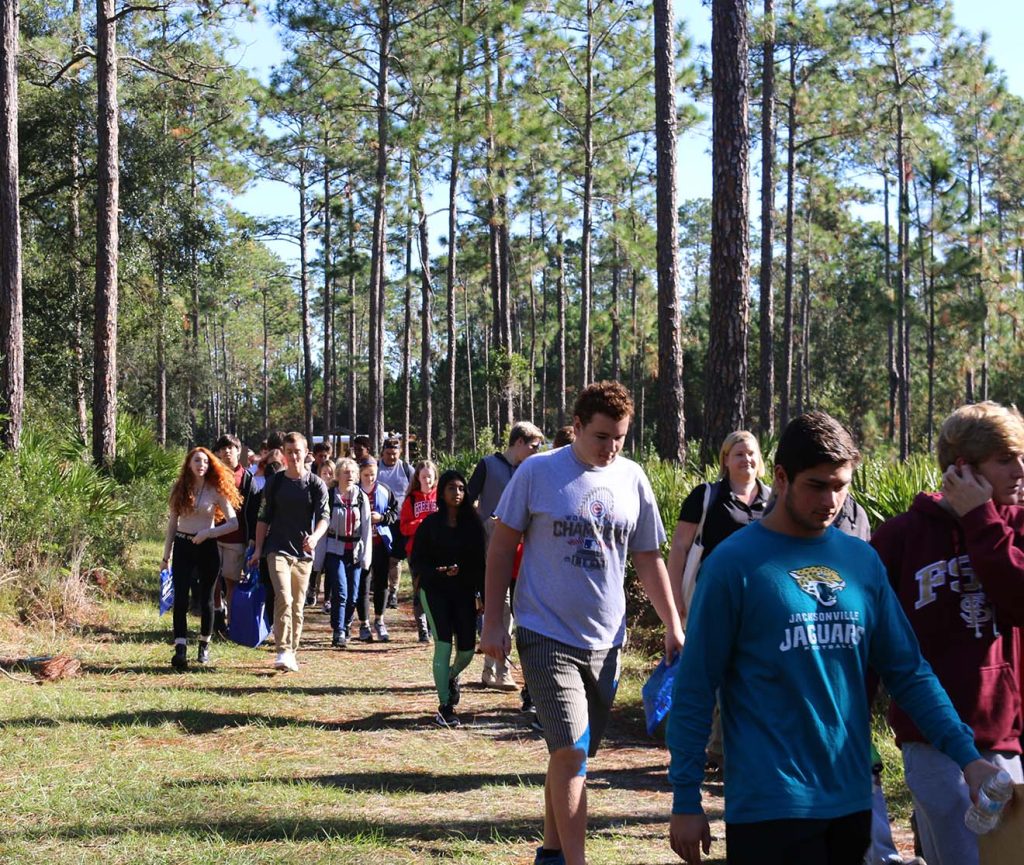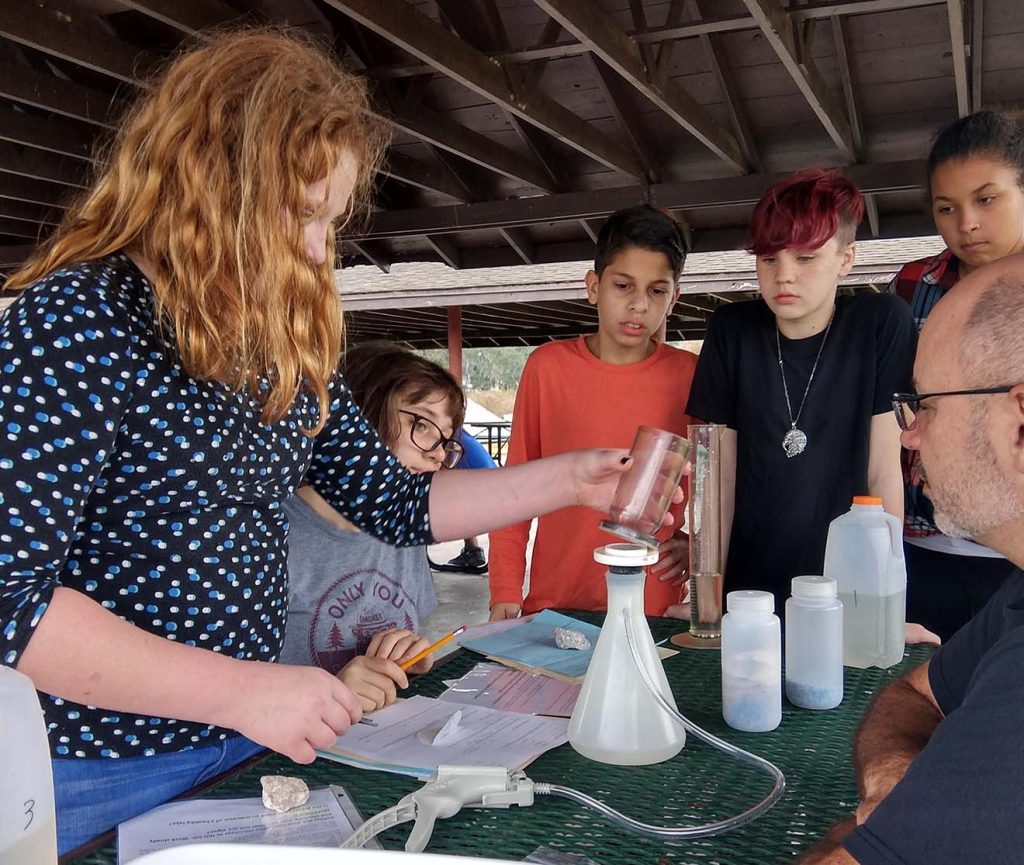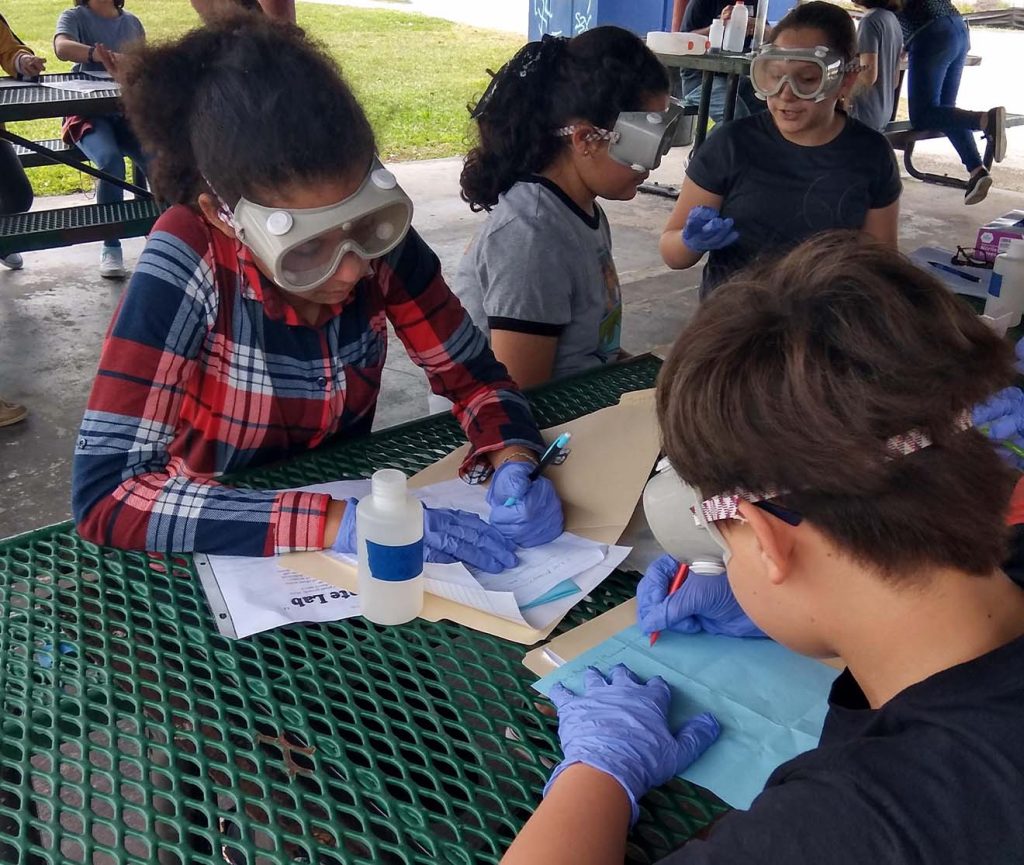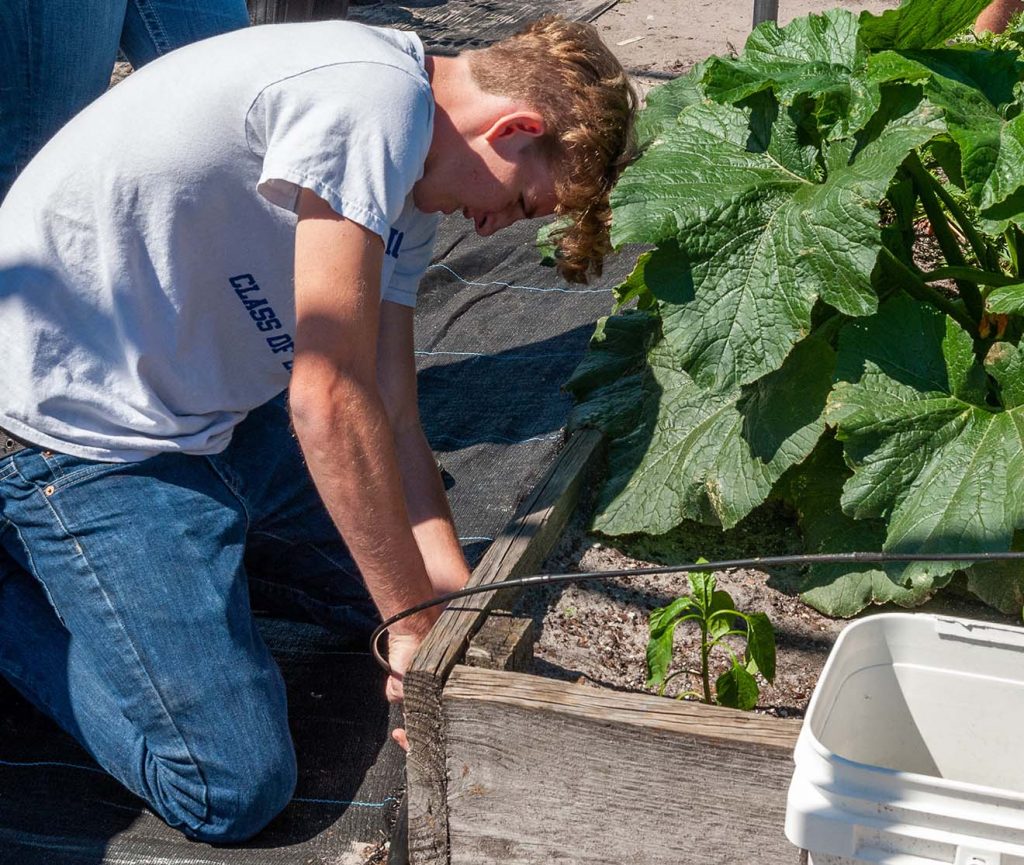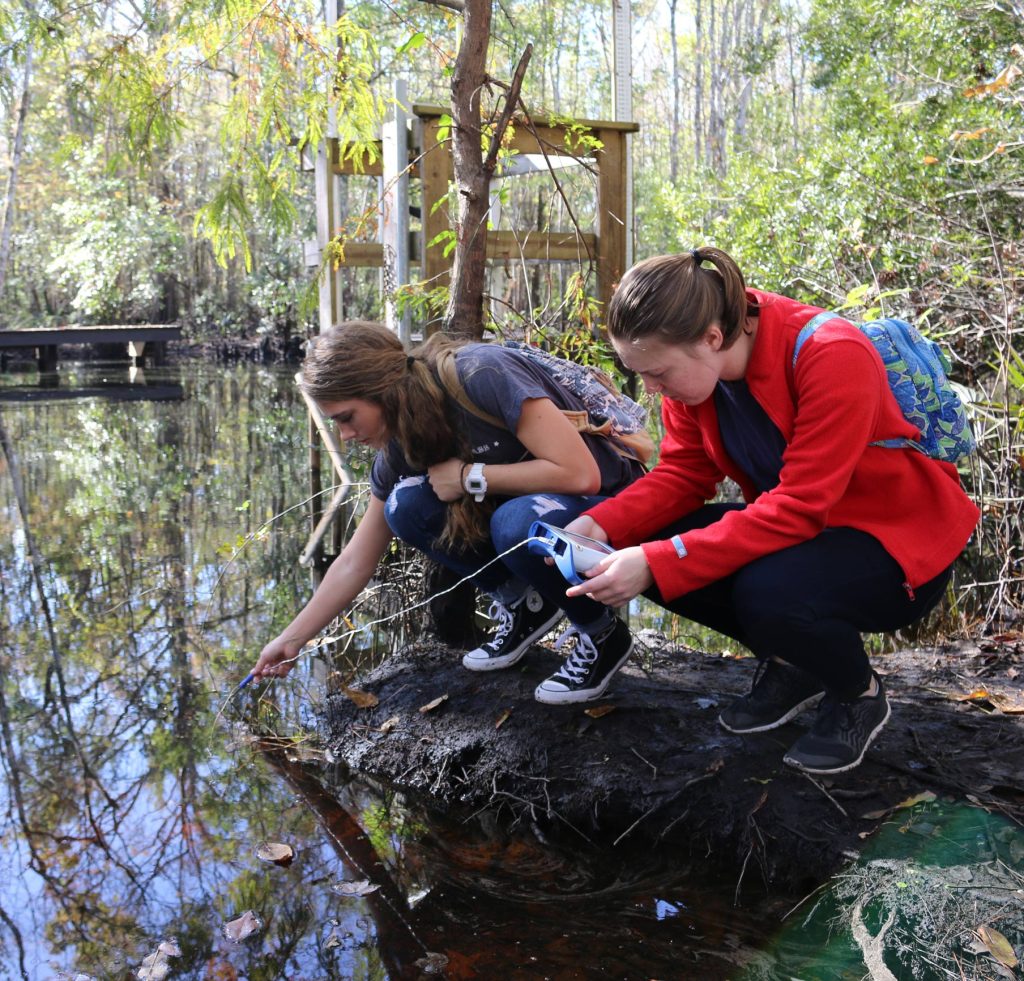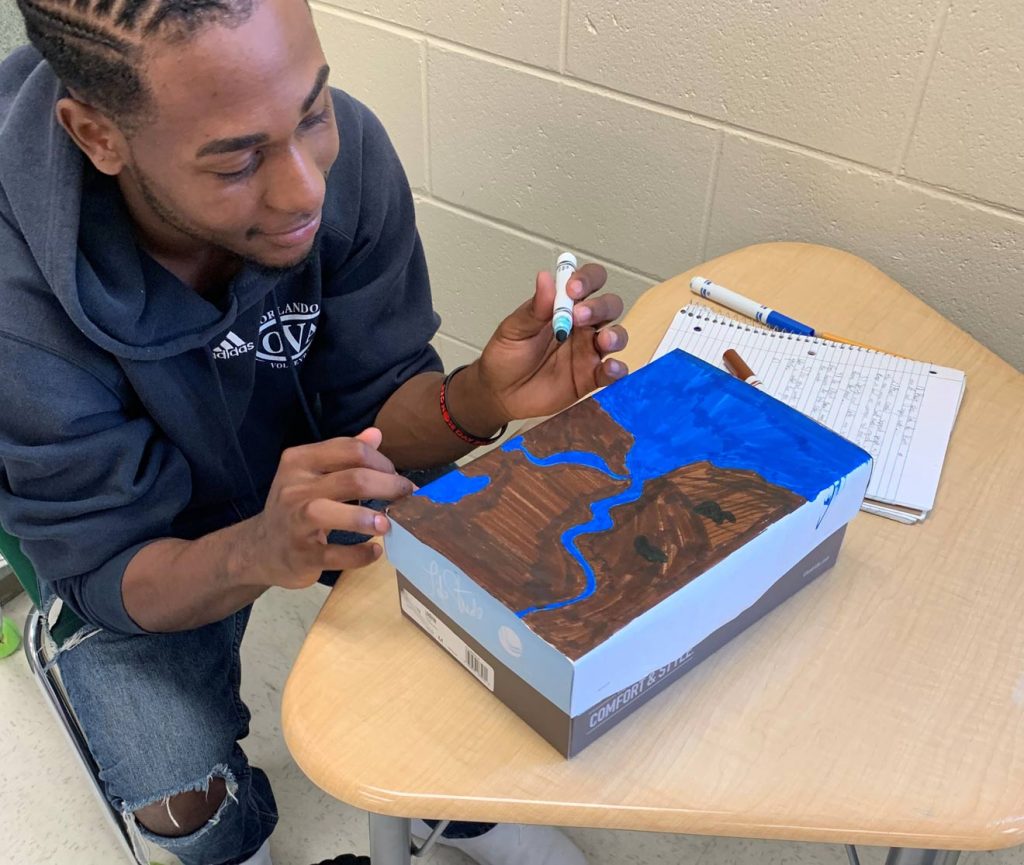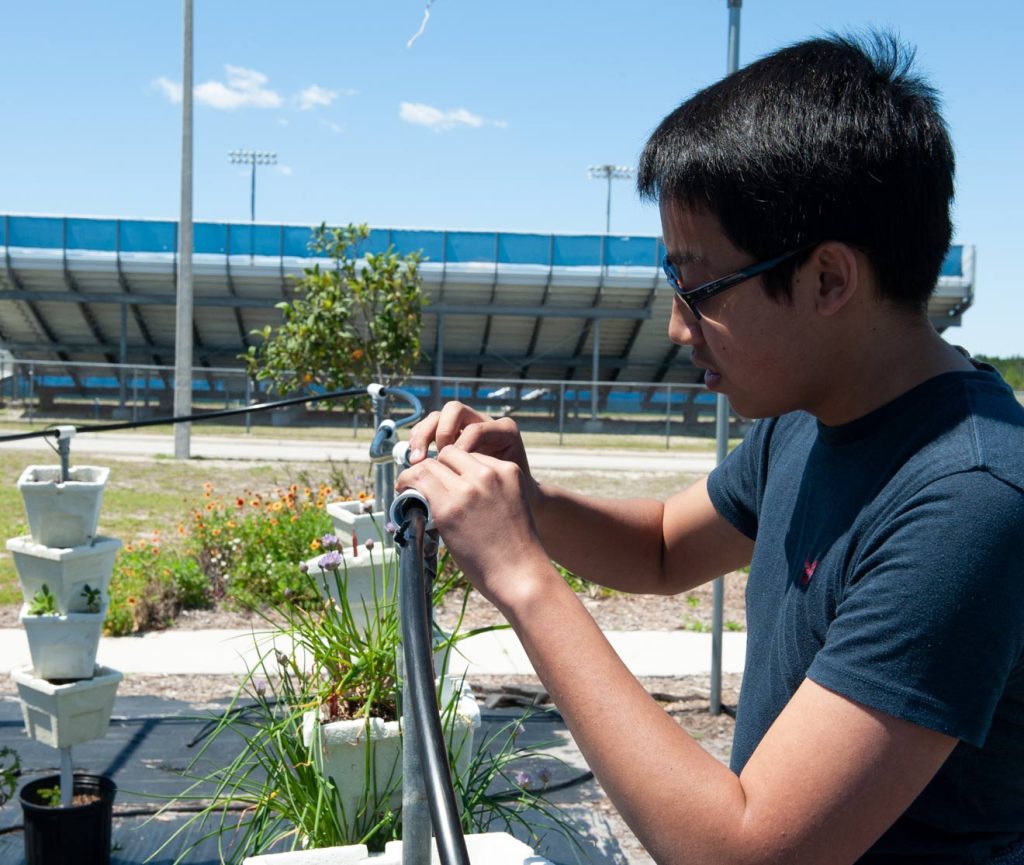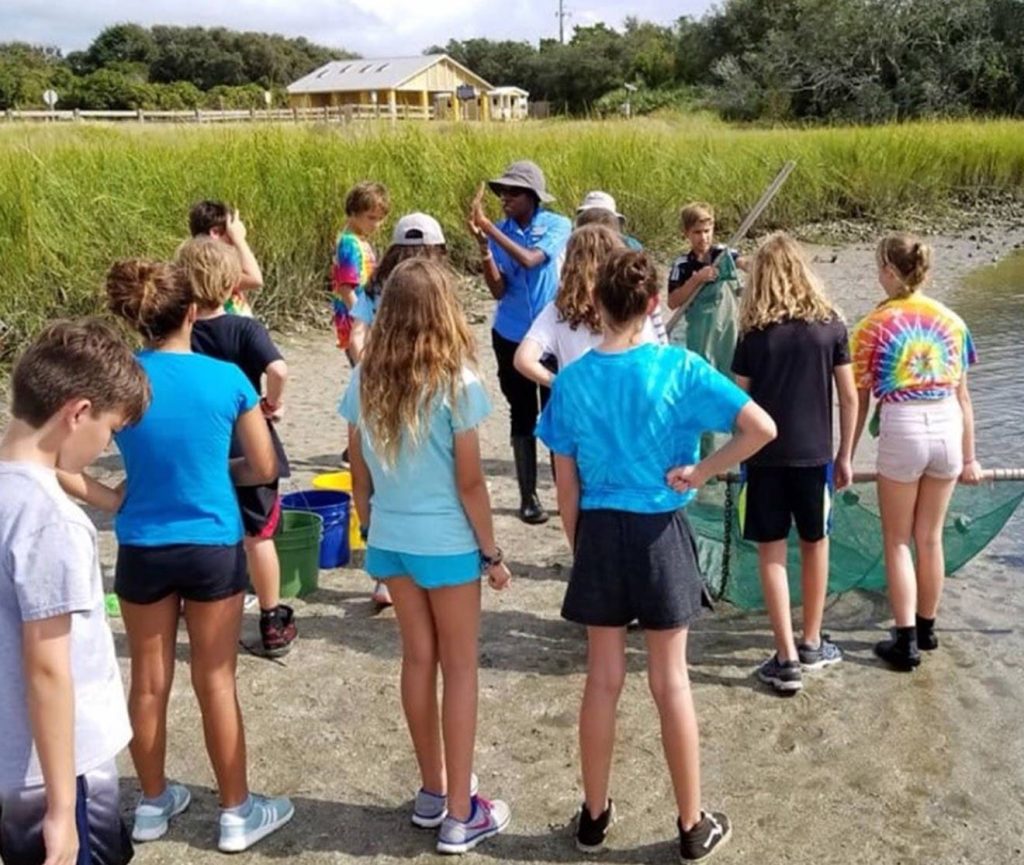Blue School Grant
Blue School Grants provide funding to teachers within the District in support of their efforts to engage students in understanding and appreciating Florida’s freshwater and estuarine systems.
Blue School Grant Impact Since 2016

Projects funded:
115

Students reached
15,500

Funds awarded:
$175,000
How to Apply
Purpose:
The mission of the Blue School Grant is for students to develop an appreciation for Florida’s water, an understanding of water as a limited resource, and a water ethic that they can foster throughout their lifetime.
Grant amount:
Up to $3,000 per teacher/school, if multiple teachers apply. A total of $60,000 is expected to be awarded for the 2025-2026 school year.
Eligible applicants:
- Educators working with grades K–12 in public and charter schools.
- Schools must be within the boundaries of the St. Johns River Water Management District.
- Projects may be for individual classes, teaching teams, or a grade level.
If you are experiencing any issues with the locator tool, please try to reload or refresh this webpage and try again.
Next steps:
To be considered for funding, submit a description of your proposed project, including the goal and key concepts addressed. See Application Overview for details. Grant selection is competitive, and projects will be ranked using a rubric.
Key dates:
- August 1: Application period open
- September 21 at 11:59 p.m.: Application cycle closes
- End of October: Grantees notified
- Early January: Funds awarded
- January–June 1: Project activity period
- June 1 at 5 p.m. Final report and documentation are due to the District.
For additional information about this program, please contact:
Ali Pressel
Education and Outreach Coordinator
Office of Strategic Communications and Engagement
386-329-4339
apressel@sjrwmd.com
Photo gallery
Projects considered for funding must address a subset of the following key concepts:
Watershed/Ecosystem Understanding
- A watershed is an area of land that water flows across as it moves toward a common body of water, such as a stream, river, lake, or the coast.
- An ecosystem is a community of microbes, plants, and animals (including humans) that interact with one another and with the physical environment in which they live. Water connects all types of ecosystems.
- Plants need water and adequate sunlight to grow.
- Hydrology and soils determine the kinds of plants that grow in specific locations.
- Groundwater is replenished by rainfall as water circulates through the water cycle.
Water Quality
- We all live in a watershed and everything we do can affect the quality of our water.
- Scientists use different types of equipment and tests to measure water quality.
- Pollution comes from many sources, and pollution on the land’s surface can end up in our lakes, rivers, springs and aquifer.
Human Use (supply and conservation)
- Florida’s future depends on a continued supply of freshwater for human consumption and natural systems; conserving water is vital.
- Different irrigation methods use various amounts of water.
- Florida-Friendly Landscaping™ practices require less water and can protect water supply and quality.
- Most of the water used in Florida’s homes and schools comes from the aquifer or groundwater.
Sample project ideas:
Examples below are provided for understanding; they are by no means a complete or exhaustive list of what is expected for the application Any type of project that creatively covers the key concepts will be considered for funding.
Regional freshwater/estuarine resources field study
Students will work together to test water quality through field research at locations along the St. Johns River. To determine a healthy ecosystem, students will use PASCO probeware to monitor water quality parameters and utilize resources from the Leaf Pack Network and the Stroud Water Research Center to determine the overall health of ecosystems in our community along the St. Johns River. Students will also learn to use two software programs, iNaturalist and ArcGIS Survey123, to collect and analyze biodiversity in our community and participate in citizen science. At each site, students will conduct a “Bio Blitz” to count the presence of organisms along the banks of the St. Johns River. Students will utilize field research techniques to identify macroinvertebrate, birds, small mammals, and plant species along the river.
Budget:
|
Item |
Cost |
|
Transportation cost for bus |
$200.00 |
|
Substitute coverage |
$240.00 |
|
Water quality colorimeter tests for Nitrogen/Phosphorus/Ammonia: Pasco scientific 30 snaptest vials |
$150.00 (bundle) |
|
Forestry suppliers leaf pack stream ecology kit |
$213.00 |
|
Carolina Biological, LaMotte water monitoring kit ($41.75 x 4) |
$167 |
|
Carolina Biological, Nitrate and Nitrite test strips |
$21.20 |
|
Fisher Scientific, LaMotte Phosphate test strips |
$21.50 |
Watershed and aquifer stewardship
Student will learn how pollutants impact water runoff by creating their own Edible Marsh, a simulation using aluminum pans filled with crushed cream-filled chocolate cookies to represent a sandy-soil mix, vanilla wafers for barren sandy areas, varying types of colored candy to represent natural fauna growing in sandy soil mix, chocolate syrup to represent an oil spill, and milk to represent rain which creates run off. Furthermore, students will make a 3D model of a watershed using the Enviroscape base kit, clay, acrylic paint and original 3D printed parts to add to the base kit simulating the school’s watershed, hammocks, and stormwater runoff.
Budget:
|
Item |
Cost |
|
6 colors of 3D printer filament to create a model of sculptor’s watershed effect. |
$120 |
|
24 acrylic paint set |
$40 |
|
10-pack write-on signage 18×24 with H-stakes |
$30 |
|
Art supplies, paper, modeling clay, hot glue sticks, easel chart paper, graph paper to make a model of watershed effect |
$80 |
|
2 Enviroscape watershed base kits |
$70 |
|
Edible Marsh – (9×13 aluminum disposable pans $17; 4 pks cookies $16, 4 pks vanilla wafers $12, 4 chocolate syrup $18, 3-gal, milk $12, gummy worms $25) |
$100 |
Water conservation
Micro-irrigation conserves water. Students will analyze the current watering systems for their traditional garden and design a more water-efficient system using pvc pipe to bring micro-irrigation to their traditional and butterfly garden using three rain barrels to capture water. Florida’s aquifer – Students will understand the delicate balance of our natural aquifers and how they work. They will learn about Floridan aquifer, one of the most productive groundwater resources in the United States and the source of students’ drinking water.
Budget:
|
Item |
Cost |
|
Mulch |
$150 |
|
3 rain barrels |
$400 |
|
Micro-irrigation drip system |
$200 |
|
Rain barrel irrigation timer with rain sensor |
$60 |
Section keywords:
- water resources
- water quality
- wetlands
- biodiversity
- environmental
stewardship
Education partner excursions
River observations: Up to 24 guests can go for a tour of Jacksonville University’s Marine Science Research Institute followed by an hour-long trip on the St. Johns River to make observations and water quality measurements. The RV Larkin (AKA: floating classroom) has plenty of seating, a bathroom, and comes with fuel, captain, and first mate. A YSI can be used to measure pH, temperature, dissolved oxygen, and salinity. A turbidity meter and fluorometer are also available for measuring particulates and chlorophyll.
Budget:
| Item | Cost |
| Excursion | $300 |
| 50 Passenger Bus | $750 |
Hands-on Hydrology: Students will learn about watersheds, pollution, and solutions using a hands-on lesson with the Enviroscape watershed model. The students will then go a walking tour of the following hydrological and man-made features at the Jacksonville Arboretum and Gardens: a spring-fed creek, seep, lake formed from a barrow pit, dry retention pond, and a stormwater outflow pipe.
Budget:
| Item | Cost |
| Excursion | $100 plus $3 per person (chaperones, students, teacher) |
| 50 passenger bus | $750 |


